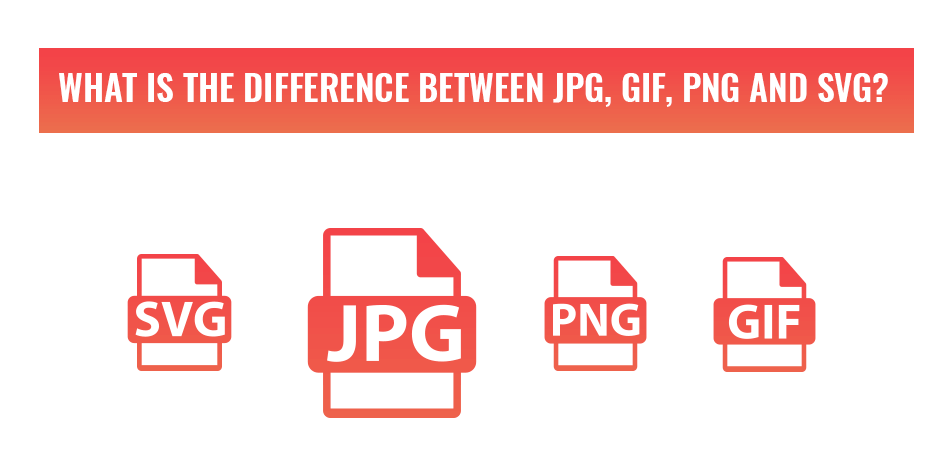
The difference between JPG, GIF, PNG and SVG
What is the difference between JPG, GIF, PNG and SVG? They are all image files and all four can be used on your website, but they are not all the same. Some are better for certain types of images while some can do things that others cannot. Today we will discuss the difference and when to use each one.
What is a JPG?
JPG or JPEG, they are different names for the same thing, Joint Photographic Experts Group. As the name suggests, this image type is great for photograph-like images.
Photograph and artwork tend to be heavy on your website. Large file size and slow to load. What makes JPG so useful for them is that it can compress into a smaller file size without degrading the image quality to a degree that we can notice. You can use an online tool like TinyJPG to do just that in a very quick and easy way.
There are two traits about JPG that do work against it. The first is that it will not support a transparent background. If you try to make a JPG without a background, it will automatically give it a white background. The next is that JPGs degrade if they get saved over and over again. It’s like making a copy of a photocopy.
Best uses for JPG: Photographs and artwork.
What is a GIF?
It doesn’t matter how you pronounce it, GIF stands for Graphics Interchange Format. This file format is a favourite for debate online but its real use is for animation. It says it in the name, Graphics Interchange. As in images that swap out with each other to create an animation.
These images are large and take up a lot more space than the other types of images. So using these can really slow your website down. Their colour palette is also limited to 256 colours, so you can’t get the best quality from them.
Best uses for GIF: Simple animations with a very limited number per page.
What is a PNG?
PNG or Portable Network Graphic are also sometimes called raster graphics or images. PNG and JPG both share a similar issue in that when you enlarge them or zoom in too far, they will start to get pixelated. So, when making a PNG, it’s important to know the correct size that it needs to be on the web page.
PNG is the ideal image type for website graphics as they can keep their image quality incredibly well and the best part is that it supports transparent backgrounds. To avoid your PNGs from slowing your website down, you can also compress the file in a similar way to a JPG. We recommend the sister site to the one we suggested before, TinyPNG.
Best uses for PNG: Transparent images, icons and graphics.
What is an SVG?
This file acronym stands for Scalable Vector Graphic but it also sometimes gets called a vector graphic for short. Unlike all the previous image files, SVG uses vectors and not pixels which allows it to give sharper images than any of the above. Here’s how:
SVG files work in a completely different way. It is actually code that gets translated into an image. This code contains mathematical equations that define the shapes, colours, and size of an image. So, they retain their quality no matter how big or small the image becomes.
So why aren’t all your website images SVGs? This file type cannot simply be uploaded to websites that use a CMS like WordPress and there is a large learning curve to generating and installing them properly. They also can’t be used for photographs.
Best uses for SVG: Logos, icons and animations.
Choose the correct JPG, GIF, PNG or SVG with Web2Web.
The images on your website are important to its success, especially when applying the best UX practices. A good image can capture the attention of a client and draw their attention to their next step. However, that all counts for nothing if those same images are slowing your website down. Clients won’t stick around for your page to load if it is slow.
This is why choosing the right image type and compressing them can be vital to your online business. With the Web2Web team, you can get the best for your website in the industry from design to development. Contact us today to find out how we can make your website perform its best.

 021 551 2060
021 551 2060



